The first issue with Rocket Rods might’ve been the land it was placed in. The New Tomorrowland designers came up with for Disneyland was a clever (and cheap) re-use of the concepts they’d conceived of for Paris’s Discoveryland. The earthy, golden, fantasy vision of the future was effective in Europe. Imported to California, it didn’t amount to much.
The real problems were in its style and substance.
Image: HarshLight, Flickr (license)
Problem 1: New Tomorrowland's Style
There’s nothing at all inherently wrong with the “Discoveryland” concept. In fact, Paris’ Discoveryland is gorgeous and atmospheric and romantic in a way that the (intentionally) more sterile and comical Tomorrowlands can’t be. There's also something interesting about Florida's Tomorrowland being a sci-fi future and California's being a fantasy future – a unique and intentional divergence.
But while Paris’ land was custom designed as a Victorian steampunk port, the overlay in California amounted to little more than painting the existing, Space Age buildings in dark, dismal bronze and brass. It was immediately recognizable as a dreary, dark coat of paint on buildings that, architecturally, were a world away from the custom-made Jules Verne wonders of the real Discoveryland.
The rocks positioned at the land’s entrance only served to clog the infamously tight pathways of the tiny park. While the duplication of Paris' spinner at the land's entrance is, admittedly, very beautiful, it only made the traffic situation worse while eliminating what had been the must-try thrill of the old elevated Rocket Jets. (According to insiders, the elaborate gold ornamentation was too heavy to be supported on the pedestal, adding insult to injury.)
Image: Disney
Then there was Space Mountain – an icon of gleaming white Space Age architecture, it was haphazardly painted in rusted brown and green. Paris’ custom-made, Jules Verne themed, golden Space Mountain (above, with its built-in De la Terre à la Lune literary storyline) is beautiful. Simply painting the obviously Googie mountain in California dark brown did not convey the same gravitas. Worse, it was a total mismatch for the experience contained within... Which brings us to…
Problem 2: New Tomorrowland's Substance
Even the corners of Tomorrowland that looked halfway decent in their new, earthy color scheme missed the point. It simply made no sense to affix a “Jules Verne” exterior to Tomorrowland’s rides. Once you were inside the bronze Space Mountain, it was the same ‘70s Space Age décor that had been there for decades… The da Vincian Astro Orbitor was incongruous to the ‘80s-inspired Star Tours it stood in front of… And then, golden, steampunk-maritime accents atop Buzz Lightyear Astro Blasters…
In other words, even if the Discoveryland overlay in California had been done with a sky-high budget and looked as beautiful as the original in Paris (which it didn’t), it still wouldn’t have made any logical sense given the contents of the land.
And by the way, it did not escape fans’ notice that this New Tomorrowland amounted only to dark brown paint, a 3D movie from Epcot, the tired Innoventions from Epcot, and the always-closed Rocket Rods coinciding with the closure of the Submarine Voyage and PeopleMover. Some “New” Tomorrowland.
Problem 3: Rocket Rods Technology
Image: Disney
New Tomorrowland was bad, but the Rocket Rods themselves did not help matters. The Rocket Rods opened along with the rest of New Tomorrowland on May 22, 1988. Barely a month later, on July 6 (right as the summer season kicked in), they were shuttered. In its first month, the ride was plagued by downtime, often operating in its own hours separate from the parks. The problem was in the technology.
To send guests flying down the old PeopleMover tracks, Imagineers used a retro-fitted version of the ride technology they were concurrently installing for Epcot's Test Track. But that's not saying much – to give you an idea of how Test Track's development was going, Disney approached its sponsors – General Motors – to ask if they'd like to sponsor the Rocket Rods, too. When GM was told that the Rocket Rods would use the same technology as the troublesome Test Track, they declined to become involved...
Problem 4: Rocket Rods Budget & Infrastructure
Mired in the midst of Eisner's budget-conscious regime and forced to keep the budget for the land's redesign to a minimum by penny-pinching park executives at the time, Imagineers scrambled. They were locked into using only what Walt's "old" Tomorrowland had left them – namely, the PeopleMover's track. But by its nature, the old scenic tour (with a maximum speed of 7 miles per hour) would glide through buildings, gently curve along corners, and tour through convoluted twists and turns in the track. The Rocket Rods would accelerate along the same route at five times the speed. The trouble is, the PeopleMover's tracks would require extensive reconstruction to rebuild infrastructure and – most importantly – bank the ride's tracks to allow the Rocket Rods to zoom along uninterrupted.
But the budget wasn't there.
The Rocket Rods would need to use the old PeopleMover track exactly as it was. Which meant that at every turn or twist in the flat, unbanked track, it would need to slow to a crawl – no faster than the PeopleMover had gone – before accelerating again at straightaways, then braking for the next turn, on and on.
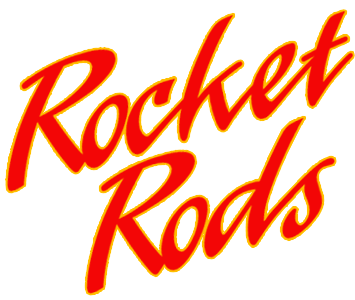
The constant start-stop, slow-fast undulations of the ride tested the patience of computer systems that traced the location of all 22 - 23 Rocket Rods on the track, automatically stopping the ride if any vehicle was even slightly off from where the computer calculated it should be to maintain block clearance.
In other words, consider it a vicious cycle: unbanked turns forced the ride to constantly adjust its speed, frazzling computers, braking (and breaking) the ride. That constant stopping also wore out tires at lightning pace, sending maintenance, downtime, and budgets flying, and ballooning wait times to over two hours on weekends (which, combined with the vehicles 1 – 1 – 1 – 2 seating arrangement, led to Rocket Rods being the first Disney attraction ever to offer a Single Rider Line).
Some insiders even report that the PeopleMover tracks – engineered for the idling and lightweight PeopleMover trains – were physically buckling at the weight of the Rocket Rods and their slot-car style equipment affixed to the paths. According to these sources, the physical infrastructure needed reinforced to handle the weight of the ride and the force exerted by the high speeds and quick decelerations.
End of Line (2000 – 2003)
Image: Loren Javier, Flickr (license)
The brand new ride lasted barely a month before closing for a refurbishment. It was supposed to last for a full month. Instead, it lasted three, ensuring that the Rocket Rods missed the busy summer season that should've marked its debut. The ride re-opened in October 1998... with as many problems as before. The Rocket Rods seemed to be closed more than they were open, and it must've become clear to engineers that without serious modifications, the ride was simply not viable.
On September 25, 2000, the Rocket Rods were closed with signs indicating that an extensive refurbishment (or maybe a full rebuilding) would see the ride re-open in Spring 2001. Spring came (seeing the opening of another Disaster Files: the original Disney's California Adventure) and there appeared to be no work completed on any square foot of the Rocket Rods track.
On April 28, 2001 – about the time the ride was due to re-open – Disney spilled the beans and the Orange County Register announced that the Rocket Rods would never re-open. The park's president at the time, Cynthia Harris, admitted to the New York Times that "the high-speed attraction was never able to perform to its designed show standards.” The Times added, “The problem, she said, was a budget-conscious decision to run the high-speed Rods on the PeopleMover’s unbanked track.”
As quickly as they'd appeared, the Rocket Rods vanished, leaving this bronze New Tomorrowland without its headlining attraction.
What’s Next?
Image: HarshLight, Flickr (license)
Ouimet got Tomorrowland back on track, but it’s painfully obvious that efforts to breathe new life into Tomorrowland in the 1990s were no more successful than any that came before. Tomorrowland is tired.
In Florida, the ‘90s redesign led to a clever sci-fi spaceport somewhat resembling Disneyland’s forgotten Tomorrowland 2055. The land there was crafted into a stunning alien city with a single continuity connecting all of its rides, shows, attractions, and even restaurants, packed with original concepts like the Timekeeper, Alien Encounter, Take Flight, and the Tomorrowland Transit Authority joining Space Mountain and the still-sky-high Astro Orbiter. But time hasn’t been kind to the land, which now serves as a catch-all for Disney / Pixar movies like Monsters Inc. and Toy Story 2. Beloved Lost Legend: Alien Encounter even turned into an attraction so terrible; we ranked it as the worst Disney attraction on Earth in its own standalone Disaster Files: Stitch’s Great Escape feature. Still, Florida's Tomorrowland proved that Disney could do a story-centered Tomorrowland packed with original attractions... when they want to.
Disneyland Paris’ brilliant Discoveryland fell, too. While it’s style is still timeless and wonderful in the way designers wanted, its substance has tanked, becoming yet another Tomorrowland. The gorgeous European port is home to Buzz Lightyear and Star Tours, and the once-Jules-Verne themed, ornately decorated steampunk Space Mountain was stripped of its Jules Verne ornamentation and is now due to become the Star Wars themed Hyperspace Mountain… A gilded land.
But even among these sad declines in quality, Disneyland’s Tomorrowland is still the worst off, with lingering corners of gold meshing awkwardly with Ouimet’s best attempts to bring silver back into the picture. While all the rest of the park's lands are all ruled by overarching continuities connecting the rides, shows, and attractions within to a single time period and setting, Tomorrowland is an intellectual property grab bag with no sense of time, place, or character. It's just a mash-up of vaguely-futuristic buildings with mismatched rides themed to everything from Star Wars and Toy Story to Finding Nemo. And that's a shame.
By the way, an entire Star Wars land is due to open at Disneyland in just a few years, which will make Star Tours redundant, probably leading to its closure. And if you think Marvel might be the hero in this story, granting Tomorrowland a new lease on life, forget it. Marvel is heading next door to Disney California Adventure, inexplicably having toppled a Lost Legend: The Twilight Zone Tower of Terror that’s closing forever in January.
So where will that leave Tomorrowland? In a sad state.
We have to imagine that Disney’s designers are looking far enough ahead to realize that Tomorrowland needs reborn in a big way. And if you ask us, Pixar ought to be left out entirely.
The Highways of Yesterday
Image: Loren Javier, Flickr (license)
So what’s whisking along the sleek tracks of the PeopleMover today? Tumbleweeds. More than 15 years after the closure of the Rocket Rods, the tracks are still there.
Insiders say that the PeopleMover won’t return, given that if it were built today, accessibility and safety requirements would necessitate wider openings, emergency egress routes, and exit stairs every so-many feet along its course – a multi-million dollar project in the name of nostalgia? Doubtful.
Removing the tracks is also out of the question, though. That's because, when New Tomorrowland was master-planned in 1967, the PeopleMover physically built into the land’s buildings. Its tracks and supports serve as support and foundations for showbuildings and demolition would be a costly and delicate process. A multi-million dollar project in the name of de-cluttering? Equally doubtful.
Put simply, there’s no reasonable way to bring the PeopleMover back, and no compelling reason to remove the tracks. Either project would likely cost millions.
Image: Disney
That means that the next time we see movement on the PeopleMover – be it as a new attraction or its crumbling at the wrecking ball – will likely coincide with the next major reimagining of Tomorrowland as a whole, if and when that finally happens. Which isn’t to say Imagineers haven’t dreamed… The image above shows one Imagineers' interpretation of what could be. But until tomorrow comes, we can at least look back on the interesting story of the Rocket Rods, one of the most disastrous attractions Disney ever dealt with.
Tell us – did you get a chance to experience the Rocket Rods? How long did you wait? Were they worth it? Given the choice, would you see the PeopleMover return to Disneyland, or give the tracks a proper, well-done thrill ride? What other attractions do you count as “disasters” that you’d like to see chronicled in our growing collection?
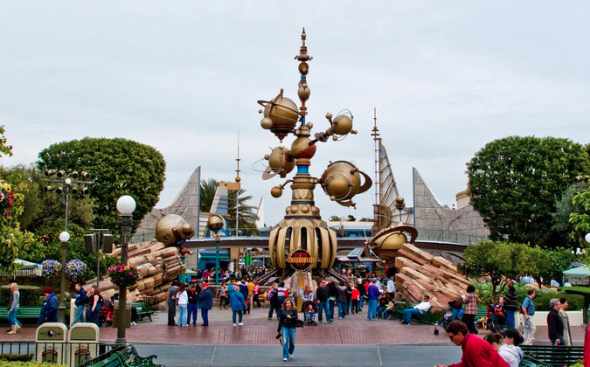
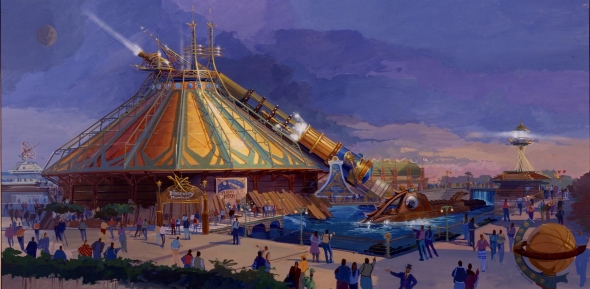
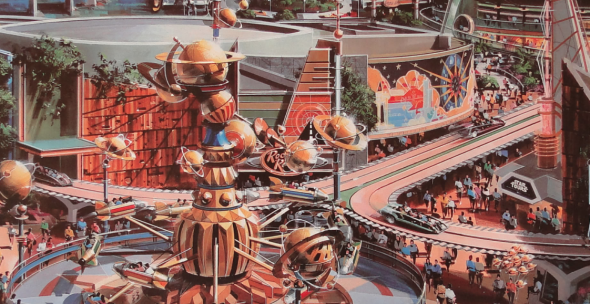
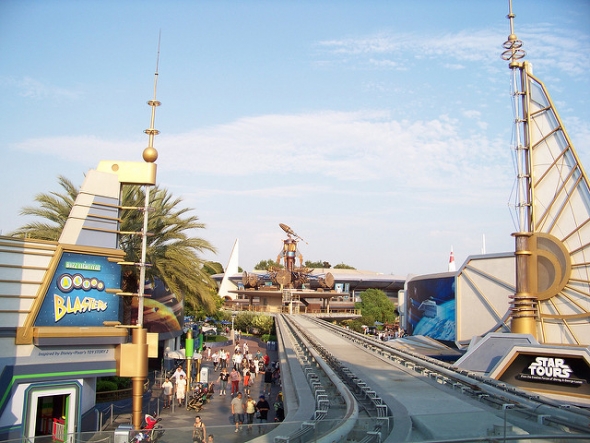
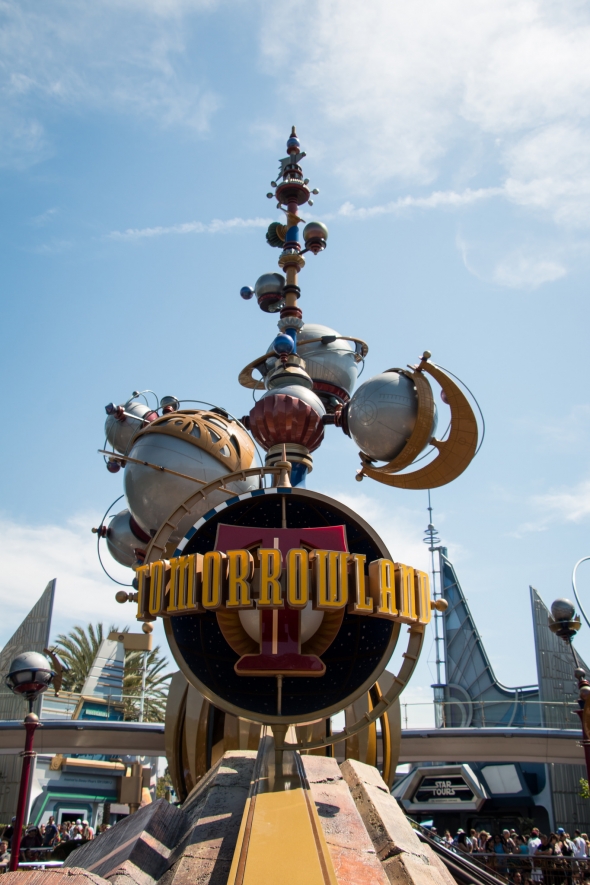

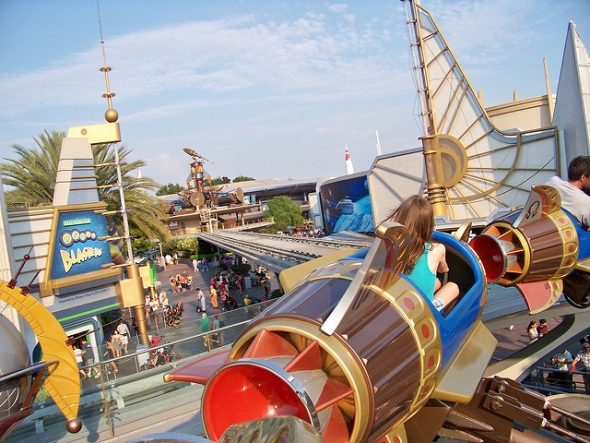
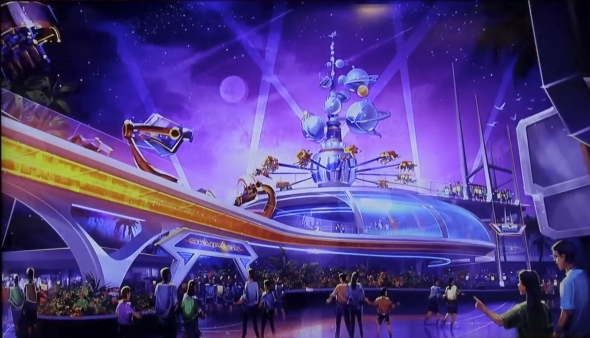

Comments
I did get to experience this ride. I was 8, and to my 8 year old self it was awesome! I do remember waiting forever, and feeling like I had to walk up an eternity of stairs. I'm really bummed I never got to go on People Mover, it seems awesome! So if it was possible, I would want that back, not a thrill ride.